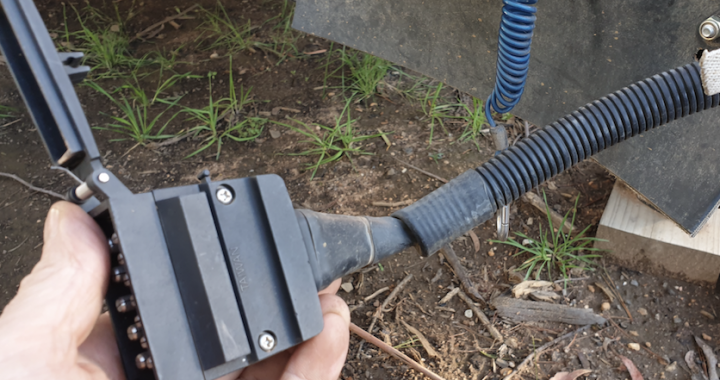Lucas Trihey 02/03/2020
Since ESS’s first outback trip to Coongie Lakes in 1986 for the Australian Geographic Scientific Expedition our staff have driven most of Australia’s popular 4WD routes and many outback roads. We’ve crossed the Simpson a dozen times and have driven the roads around Birdsville, Innamincka, western Qld and northern SA many times to recce and support desert adventures, commercial treks and when hauling gear and people up and down to the Big Red Run and the awesome Big Red Bash. In the early days it was one LandCruiser, now our fleet includes over a dozen 4WDs and cars, lots of trailers and half a dozen large trucks.
Driving out west is now “business as usual” for our crew and vehicles and over the years we’ve learned what prep we need to do to make sure we get there and back with minimal damage and interruptions.
This post covers what we do to prepare these vehicles. Readers should do your own research and can take from this post what you find useful. We make no recommendations.
What vehicles can get to the Big Red Bash?
With minimal preparation we regularly prepare sponsor vehicles, 2WD and 4WD staff cars and trucks of all sizes. Any car, van, bus or truck can get to the Big Red Bash.
Ruggedising
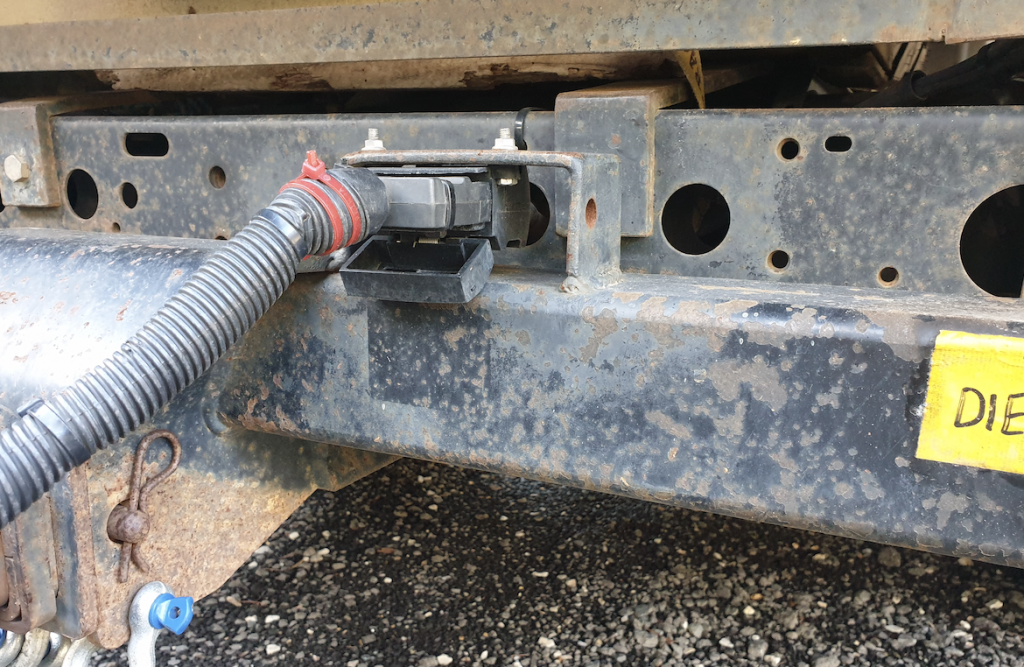
The loose gravel on most outback roads gets picked up by the front wheels of the vehicle and shoots back to pepper everything behind like a mini sand-blaster. Protecting vulnerable under-body parts is a big part of our vehicle preparation but aside from those measures (described below) most unmodified vehicles can get to Birdsville and the Big Red Bash. We’ve learned that the hand-brake components of the 79 series Cruiser are a bit lightweight and are easily damaged so we’ve fitted extra rubber stone flaps in front of the cable and lever-arms to keep the rocks at bay.
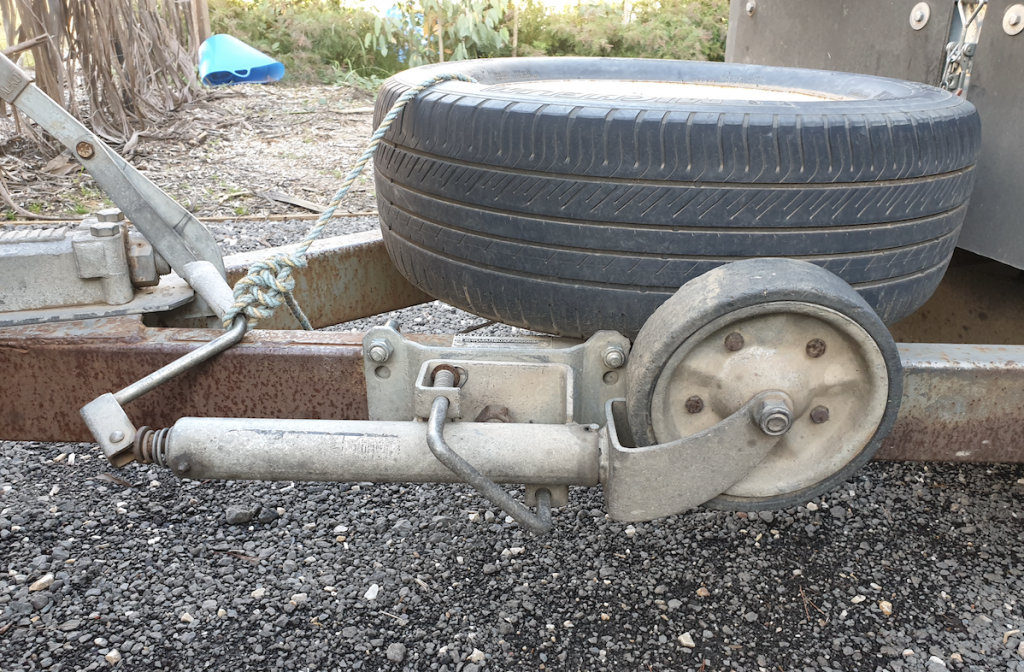
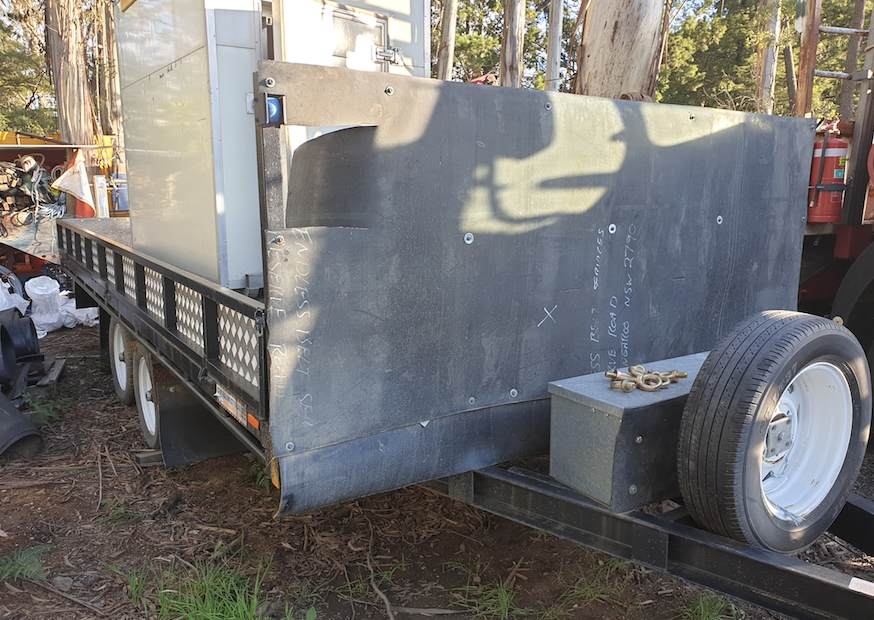
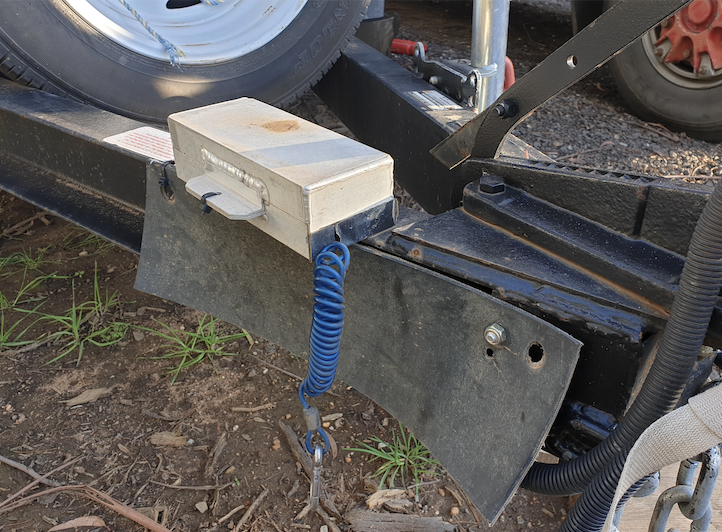
Under-body
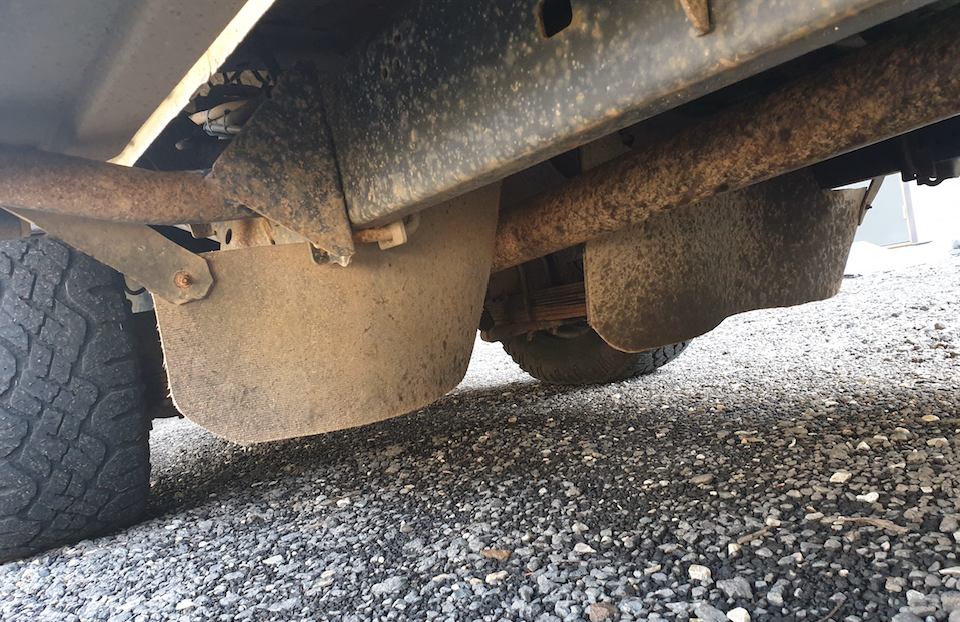
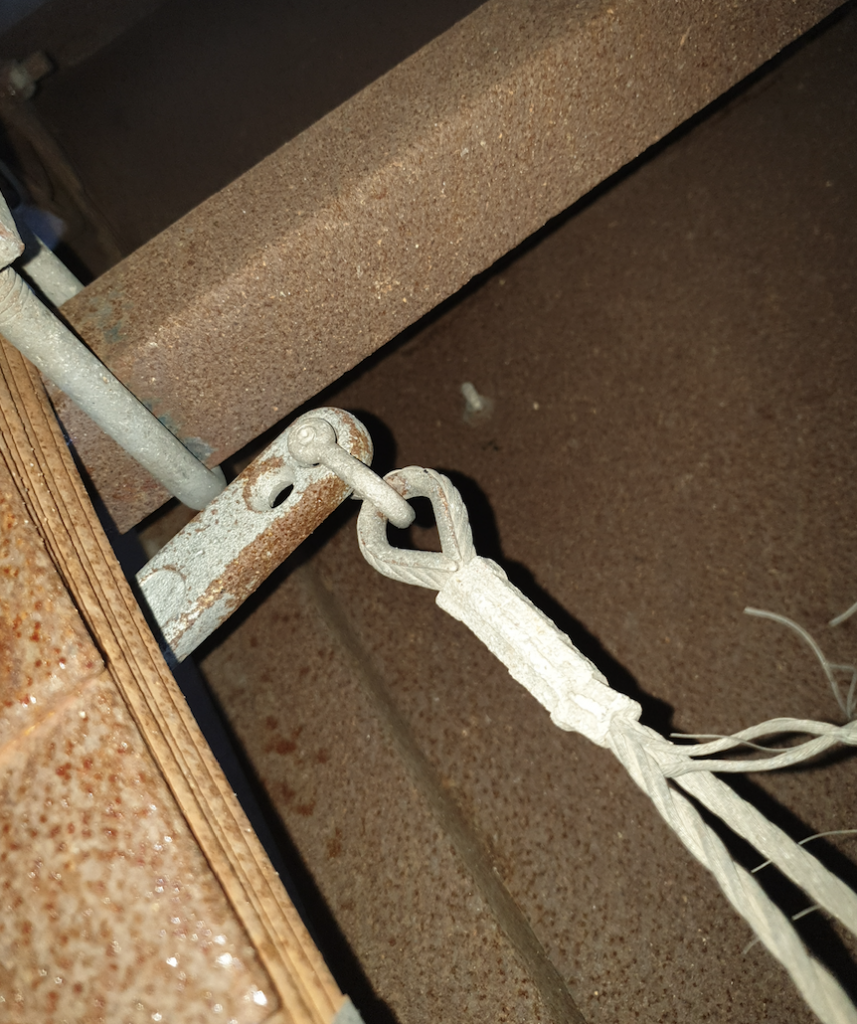
When we get a new crew or sponsor vehicle we lay on the ground and look underneath for exposed wiring or pipes, cooling fins, lightweight brake parts/cables and anything that might get broken by small rocks peppering whatever is exposed down there.
We also look for low hanging major parts like cross-members or transmission parts and consider whether a big rock in the middle of the road might hit this part (more on that topic below under “Clearance”)
Clearance
A very low city car might have transmission components or cross members that hang low. This is fine on a sealed road but isn’t so great on outback roads that sometimes see soft-ball sized rocks in the middle of the road. The main solution for such a vehicle is to drive more slowly so the driver has time to avoid the big rocks. Low profile tyres make low clearance even worse so we consider fitting standard profile tyres for outback trips.
Another clearance issue arises when some years deep wheel ruts get carved out by thousands of 4WDs – this can lead to quite high humps and a low clearance 2WD might scrape on the humps. Slower speeds will allow drivers to avoid the worst of these and our 2WD crew cars usually find a way – but there’s no denying it will make for a slower trip.
Bullbar
Bull bars are useful to minimise the damage from smaller animal strikes but aren’t strong enough to prevent damage from a big roo or cow.
Our golden rule is to get off the road and camp before sunset. This is usually when roos and cattle start appearing (erratically) and/or become harder to spot and avoid. Allow plenty of time in your schedule so you don’t feel that you need to drive in the dark. It’s really easy to hit something and cause $10,000 worth of damage, not to mention needlessly killing an animal.
Roof racks
Fitting a roof rack to a vehicle that doesn’t have strong gutters is always a challenge. Sure there are racks that will screw to the roof of smaller 4WDs and cars but these are generally rated for such small loads that we tend not to bother with them. If it isn’t a large 4WD with decent gutters we don’t fit a rack any more.
Some crew turn up with these small racks and we make sure we keep well under the load rating. Going heavier combined with the vibrations of outback roads is asking for cracked mounts and roof damage. Such racks are fine for a couple of swags or other bulky/light items – but not for anything heavy. Keep the heavy stuff down low and central.
Driving lights
The outback is not the place for night driving so most of our crew vehicles just don’t need big lights. Decent lights are great on the roads closer to the cities but if crew come along with a limited budget we don’t suggest that they fit driving lights. If they’ve already got them – great!
Suspension
Stock suspension is adequate for most of our crew needs.
Our ESS Land Cruiser has the standard Toyota springs in the front and a set of 2” lift King Springs in the back. It’s got heavy duty shocks but nothing fancy, and nothing from a 4WD specialty store. We don’t spend much on brand name 4WD equipment.
The Cruiser regularly tows a 3.5 ton trailer and at Birdsville and on the Bash site it tows every trailer known to man, big and small. It’s also our main recovery vehicle on site at the Bash and regularly gets everything from cars, vans and 4WDs with vans attached out of sand bogs around the site. It even gently snatched a bogged 12 ton prime mover out of a little sand hole in 2019. At the very first Bash in 2013 it pulled a 3 ton trailer with a 110kVA genset up Big Red for the John Williamson show.
Tow hitches
Because we pull so many different trailers we’ve been using an adjustable-height tow hitch and now have these fitted to our Cruiser and Triton 4WD utes.
With a new vehicle in the fleet we check that the tow hitch and mounts are rated for the loads we’ll tow.
Trailer electricals
The trailer electrical plug at the rear of the tow vehicle is often fitted to the under-side of the rear tow hitch mounting bar. This hangs too low and will get wrecked after about 40km of the Windorah to Birdsville Road so we move this and mount on top of the bar instead and we also route the wiring safely up high and hidden behind the steel work.
If sponsor vehicles come with the trailer plug socket fitted underneath we remove the bolts and move it up somewhere higher for the loan period and then replace it in the supplied location after the trip.
Auto electric – time for a check up
Faulty or easily damaged auto electrics used to be the most common cause of delays and roadside repairs in our convoys. These days we spend time on every vehicle to check and protect the auto electrics before we leave and we rarely have problems.
We move or protect all exposed wiring underneath, we zip tie all loose wiring so it can’t vibrate or rub through on metal edges. We move vulnerable sockets/plugs and joiners or protect them with rubber mats or a couple of layers of corrugated conduit.
If you don’t feel confident with auto electrics take it to an auto electrician and get them to move or protect anything vulnerable.
We make sure EVERY power supply wire that connects to a battery has a fuse right near the battery to prevent a fire caused by sparking if the insulation wears through.
Battery isolator
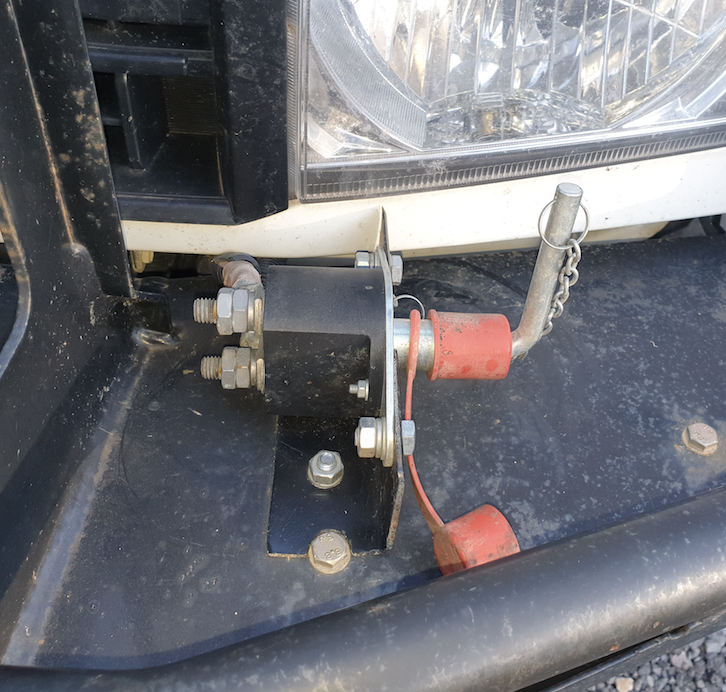
We almost had a vehicle fire one year and since then decided to fit a battery isolator to each battery on every vehicle. There are two reasons we like this set up: (1) if there is a fire (our fire started when a wire wore through yet the fuse didn’t blow) we simply flick the isolator to “OFF” and all electric power is disconnected and (2) If an older vehicle like our heavy rigid crane truck is parked for a long period we use the isolator to avoid any slow trickle loses that can lead to a flat battery. An auto-electrician can fit an isolator.
Windscreen
The best things for your windscreen is to keep your vehicle as far as practicably possible from vehicles going the other way. On single lane outback Queensland roads move off the road so the other vehicle can stay on the sealed top and hence less likely to shower you with rocks. We train all crew in cars to slow down and move off the road. Our trucks tend to stay up on top of the sealed part of the single lane roads for safety and stability.
Tyres
See the recent post about tyres – but briefly – we upgrade to new tyres before a big trip rather than eke out the last few kilometres and have to deal with flats and tyre changes on the trip.
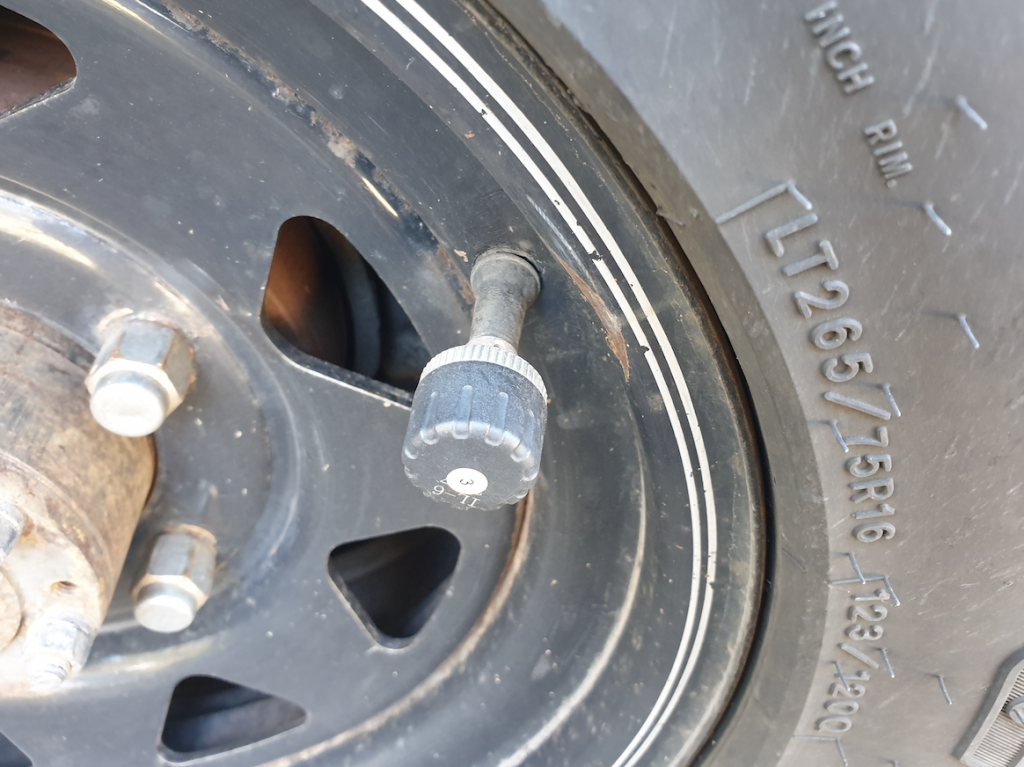
We love our tyre pressure and temp sensors – these save us money every trip by alerting the driver to a slow leak so we can stop and change before it goes flat and gets wrecked.
Choose light truck-rated tyres where possible – they are heavy duty and last longer.
Avoid low profile tyres if possible.
We run lower pressures on all vehicles when on gravel roads and have found this reduces tyre damage and cost. The tyre post has full details.
Lower tyre pressures also help reduce vibration and shocks to sensitive vehicle parts
Once on a trip on the very rough and rarely-graded roads in the APY lands of northern SA I got lazy and didn’t bother lowering my tyre pressures. The horrendous corrugations shook the old Hilux unmercifully and after a couple of hours I developed a leak in the radiator caused by the full-vehicle shuddering and vibration. If the dash and seats are shaking it’s probably due to having the tyres too hard.
The dreaded sensors on flash European vehicles
Low clearance Euro vehicles are designed for sealed roads. They can be used safely on outback roads but we’ve seen some shocking problems and we do a little extra prep work before taking these on outback Qld roads in our crew convoy.
The Euros just love placing sensors, electrical wiring and cooling fins down low under the vehicle. In an already low-clearance van or car this is really asking for trouble from flying rocks. Spend extra time protecting these parts with multiple layers of corrugated conduit, spiral wrap from a hydraulic supplier, rubber matting etc. Be prepared to drive slower on gravel roads so you have time to avoid larger rocks and allow plenty of time so you don’t feel you need to rush.
We had a Euro camper van get mildly bogged in sand at the 2019 Bash. It should have been a pretty easy pull to get it out however something caused the engine to stop and the transmission to lock. It took the owner a couple of phone calls to the dealer to find out a code to get it going again. The “call your nearest dealer” suggestion in the owner’s book wasn’t all that helpful at the Bash.
DIY OR GET PROFESSIONAL HELP?
If you aren’t familiar with what bits do what under your vehicle get a professional involved. We had a memorable moment a few years ago when a junior staff member fitted a protective rubber mat underneath but inadvertently zip-tied it to the tail-shaft. It made a very strange noise and was soon remedied J
WHAT SPARES DO WE TAKE?
Unless we have an older vehicle in the convoy we only carry basic spares. Belts and hoses last okay if checked or replaced before a big trip. We do carry a few auto electric parts as these have proven to be the things that regularly cause issues.
A sheet of windscreen film or temporary windscreen isn’t a bad idea. It isn’t hard to cop a rock through a windscreen.
Tools
If your vehicle isn’t too old and/or hasn’t had a hard life you’ll only need a small tool kit. A trip to Birdsville isn’t overly arduous and is regularly done by standard 2WD Hyundai, Toyota and Nissans. A typical tool kit on a smaller crew vehicle will comprise: a shifting spanner, screw drivers (phillips and flat), pliers, possibly a set of the commonly used combination spanners (ring/open ended) something like 10mm, 13mm, 17mm, 19mm or whatever is common for the vehicle. Duct or gaffer tape, wire, cable ties and Telstra rope.
Weather can happen – allow extra time in your schedule
Western Queensland is a very dry part of Australia, the driest continent on earth. But it occasionally rains and this can affect road conditions. If the weather is looking iffy as the Bash gets close we review our travel plans and departure dates. Some years we’ve sent crew around “the long way” to avoid localised flooding so a few extra days in the schedule can be wise.
The longer, Plan-B routes generally comprise longer sections on sealed roads – it’s usually the more direct gravel or dirt sections that get closed first.
